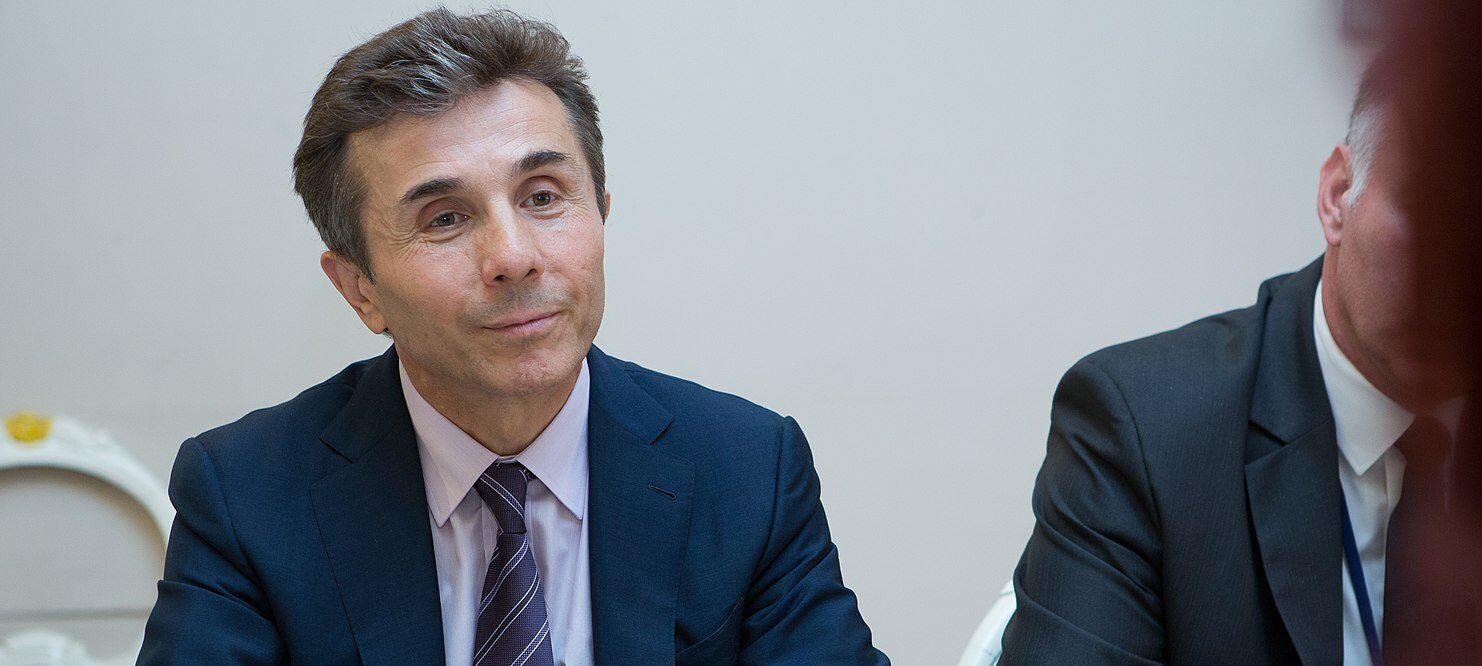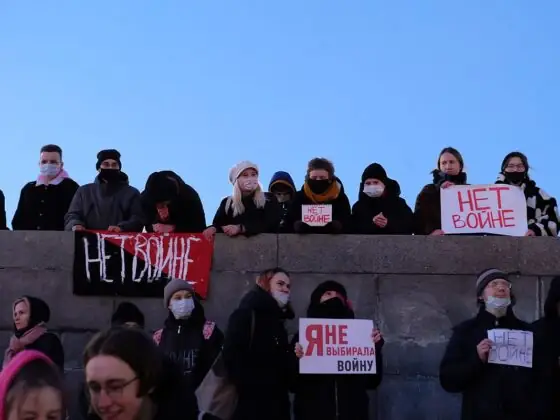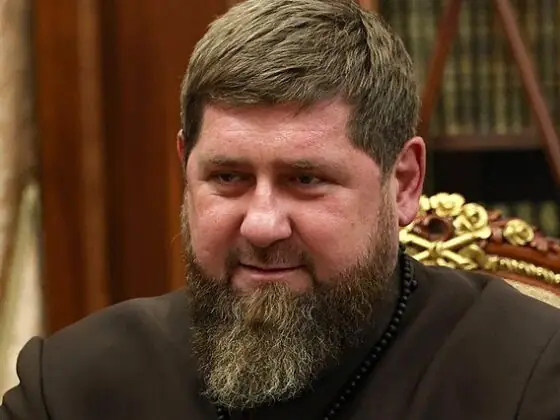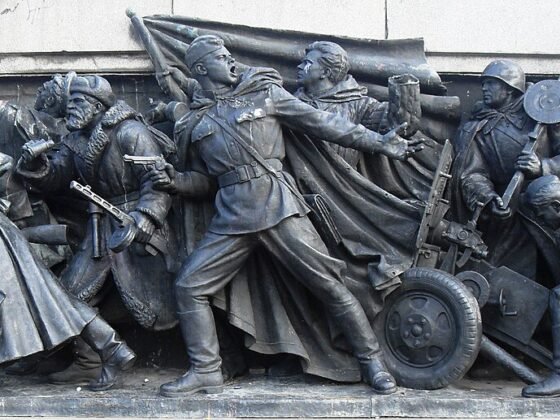Image credit/license
Georgia is not only at a geographical crossroads: In 2024, it arrived at a political one. As 2024 came to an end in Georgia, two rival claimants for sovereignty confronted one another. Thousands marched and danced in the streets while the Georgian Dream government stewed within the confines of the Georgian parliament. The Georgian legislature, elected on October 26, is only half full. The parliamentary opposition, which consists of four major electoral blocs, has refused to take their seats, claiming the October 26 election was falsified. This physical separation between ordinary citizens and the Georgian Dream government underlines the mental and emotional divisions that have emerged in Georgian society over the last year. This deep rupture in Georgia’s political life raises fundamental questions about where things go from here. Will Georgia remain a democratic system, or will it become a pro-Russia “hybrid democracy” along the lines of Hungary and Slovakia—or perhaps even the fully authoritarian Belarus—states that concentrate power in the executive and exclude popular control? Or will it follow the example of Bangladesh in August 2024, joining the long list of successful civil resistance movements of the 20th and 21st centuries that have toppled oppressive governments by peaceful means? Will Georgia in 2025 resume its three-decade-long foreign policy of moving toward Europe after the breakdown of EU membership negotiations, the result of Georgian Dream’s antidemocratic legislation and hostility to the West since 2021–2022?
2024: Annus Mirabilis?
On December 28, the popularly elected Georgian President Salome Zurabishvili left the Orbeliani presidential palace in downtown Tbilisi, her six-year term having expired. That same day, Mikheil Qavelashvili (Kavelashvili) was elected by a newly established electoral college (part of a constitutional reform in 2018), dominated by the incumbent Georgian Dream party. There will be no more popular presidential elections in Georgia unless the constitution is changed once more, and in 2025 there will be no check on the “electoral dictatorship” that has established itself in Georgia.
The contrast between the two presidents and what they represent is stark. At his inauguration on the December 28, Qavelashvili addressed a cornered establishment, surrounded by the symbolism of Georgian patriotism: guards in national costume, a male choir singing patriotic songs, and a bible. Well-dressed deputies, bearded clerics, and uniformed generals, erect in their seats, put on a show of defiance. In the front row were the ministers. Bidzina Ivanishvili, the richest man in Georgia (his wealth makes up approximately one quarter of Georgian GDP), was center stage. Recorded music and a disembodied voice led viewers through the ceremony. The people were invisible, and EU flags were absent.
President Zurabishvili, by contrast, left the Orbeliani palace walls that same day to address a crowd standing outside in a cold breeze. She called the October 26 election—the outcome of which contradicted all predictions and exit polls—rigged and illegitimate. She highlighted the unbound and untamed nature of the street opposition and underlined its manifestations of “love for country.” She contrasted this with the closed nature of Georgian Dream, which she described as isolated, “fearful, sold out” and a “Russian tragedy.” Even though she was leaving the palace, she was taking presidential legitimacy with her to the people, she said, and laid out a detailed strategy of public action for the new year. The crowd cheered—a reminder that presidents are, or should be, representatives of the people. This was the final drama of 2024, and it symbolized the two alternative futures facing Georgia in 2025.
It was a dignified exit for Zurabishvili, but the Georgian Dream government now has control of the presidency, parliament, premiership, and the judiciary, including the Constitutional Court. The presidential palace symbolized resistance to a brutal regime that vowed to ban opposition parties and employed strategies followed by authoritarian regimes all around the world, like censorship, control over public education, intimidation, violence against journalists, the imprisonment and torture of protestors, and the sacking of dissenting state employees. Georgian Dream now believes it has a path to governing without an official opposition in 2025. It controls the major forces of state coercion, such as paramilitary special forces (spetsrazmi) and the police. It has the support of the judiciary, which proved its loyalty by approving the criminalization of protests, and the Georgian Orthodox Church. It has the means to disable Georgian civil society through legislation, like the Law on the Transparency of Foreign Influence, passed in May 2024. By rejecting EU membership negotiations, it has freed itself from international pressures. United States sanctions on Ivanishvili, as well as other Georgian leaders, despite their robustness, are more symbolic than effective. Georgian Dream, so its leaders think, can wait for the protestors to burn out or leave the country in despair.
Democracy in the Making?
Throughout 2024, hundreds of thousands of Georgian citizens protested in Tbilisi, Kutaisi, Batumi, and Zugdidi, as well as abroad (Washington D.C., Berlin, London, and Paris—wherever the growing Georgian diaspora resides). It was a national protest, not confined to the capital or urban areas. Protestors were incensed by the November 28 announcement of the Georgian prime minister, Irakli Kobakhidze, that the Georgian Dream government was suspending negotiations to join the European Union. Civil servants, pensioners, actors, trade unionists, businessmen, and students peacefully confronted the spetsrazmi, masked and clad in black armor, the government’s disciplined and well-paid Praetorian Guard. There were no obvious leaders of the protest, and opposition parties were absent. Zurabishvili’s leadership, while impressive, was forced by popular pressure from below; it was not the result of personal charisma or clever decision-making. Originally supported by Georgian Dream, the defiant Zurabishvili, a center–right politician, was created by circumstances outside of her control. Georgia’s younger generation, which numerically dominates the anti-government protest, is thinking differently about politics and change. Young Georgians are fighting a deeper ideological struggle, embracing demands for self-government, social justice, and economic access. Their own views of democracy, still poorly articulated, are evolving and will be a challenge to the established political parties and to Zurabishvili herself, should she come to power.
The massive civil resistance in Georgia’s streets is promoting new political formulas and practices. There is an opportunity in 2025 to break the three-decade-long cycle in Georgia of democratic breakthroughs followed by authoritarian retrenchment. Continued government dysfunction, combined with Georgia’s weak opposition parties—which have failed to come up with new ideas or strategies—may lead to a rethink of a system that has proven unable to sustain democracy and popular accountability since Georgia’s independence in 1991. Political parties, and parliamentary elections every four years, have failed Georgian citizens miserably. Could civil resistance—with ordinary citizens encountering firsthand repressive institutions, such as the spetsrazmi and the flagrantly biased judicial system—change mental perceptions of what democracy means? Can the system be reframed after the eventual fall of Georgian Dream (it seems likely to disintegrate) to ensure popular control is properly institutionalized and the return of authoritarian challengers like Saakashvili or Ivanishvili is prevented? Georgians do not have to look too far for a model: In the first Georgian Democratic Republic (1918–1921), the self-described social democratic state provided citizens with opportunities for self-governance and control over the legislature at all levels. Power was divided, decentralized, and shared.
Government and the Contest for Power
Georgian Dream has radicalized. It is part of a powerful network of right-wing, antidemocratic populist movements in Europe. At the Conservative Political Action Conference (CPAC) in Budapest in May 2023 and April 2024, successive Georgian prime ministers, Irakli Gharibashvili and Irakli Kobakhidze, pledged their allegiance to the resurgent right and its emphasis on social order, defense of the family, and religious faith.
Georgian Dream has evolved from a liberal coalition that came to power in 2012 on a promise of greater democracy into an authoritarian political corporation. It is led by a billionaire who has converted his personal wealth into political power. The state is no longer embodied by its institutions; it has been captured by a plutocrat who uses mafia-style personal connections, limitless money, and intimidation to make policy. A glance at Georgia’s most powerful decision-makers—Interior Minister Vakhtang Gomelauri, Chief of the State Security Service Grigol Liluashvili, and former Prime Minister (now party chair) Irakli Gharibashvili—shows that all were closely connected with Ivanishvili, either as a former bodyguard (Gomelauri) or as employees in Ivanishvili’s private companies (Liluashvili and Gharibashvili).
This is what the leaderless young Georgians in the streets are up against. Those protesting on Rustaveli Prospect in Tbilisi or David Aghmashenebeli Square in Kutaisi have made it clear: They do not want the kotsebi (an epithet for Georgian Dream) or natsebi (the opposition United National Movement). The parliamentary politics of the last three decades has failed the protestors’ parents and now threatens their own future. They distrust Georgia’s opposition parties, although they will need them as partners in the transitional stage to a reformed political system. Like all civil disobedience movements, these young Georgians will face increasingly critical decisions about how to achieve victory. Their organic and joyful street actions, a vital function of solidarity and morale, must be supplemented by leadership, timing, and a focused strategy that targets the government’s vulnerabilities. Fighting a repressive government that has coercive resources at hand is fraught with risks. Soldiers usually obey their commanders. This is why smaller but targeted victories are needed to knock out the weak crutches holding up the government and bring its leaders to the table.
Three Scenarios for 2025
Georgian politics is on a knife’s edge. The stakes are exceptionally high, not only in terms of the country’s future but also in terms of the fate of the winners and losers. Compromise and negotiation are part of resolving even the thorniest political conflicts (e.g., Poland in 1989, Georgia in 2003, Ukraine in 2004). Yet that requires a willingness to retreat by the governing power and a readiness to talk by the opposition. In Georgia’s peaceful Rose Revolution in 2003, President Eduard Shevardnadze understood the government had lost institutional and public support. He had the sense to stand down. What are the chances of a similar scenario in 2025?
Escalation and a Deal?
Georgia’s protestors have shown imagination and courage in a series of carnivalesque actions demonstrating tenacity and commitment (the latest was a kilometer-long table on Tbilisi’s main street on New Year’s Eve). Their most powerful weapon, like all civil disobedience movements, is massive numbers, which can constrain government violence. The opposition’s repertoire is eclectic, and it has expanded over the last year to include disruptive marches, human chains, wildcat strikes (restauranters went on strike for three hours on January 15, 2025), and parody. Nonetheless, at the end of 2024, the protestors are increasingly stumped. Gene Sharp, a leading proponent of civil resistance, cites persuasion, noncooperation, and intervention as interrelated elements in civil disobedience campaigns. The Georgian civil resistance movement has yet to begin the most important (but dangerously provocative) stage of intervention. This is risky, but if well planned, it can succeed without violence. That requires the support of multiple social groups, ranging from ministerial staff to shop owners, bus drivers, medical personnel, and trash collectors. Intervention encompasses occupying government buildings, striking, boycotting, and creating alternative authority structures. The Georgian Dream government, despite appearances, has very narrow options, all of them extremely risky. In the end, its leaders may try to bargain their way out of prison or exile with an offer of new elections, or they may make further mistakes, as they did on November 28. The government no longer functions as a collective network of departments, ministers, advisors, and lawyers; it relies on the largely unfettered decisions of one man and a small circle around him, a recipe for strategic miscalculation.
Salami Tactics
In the 16th century, Etienne de La Boétie famously argued that no government can rule without minimum cooperation from the governed. In 2024, the Georgian government enjoyed the consent of a significant portion of the population but lost its support among urban youth. Other important groups such as journalists and civil servants in the Defense Ministry, National Bank, Education Ministry, and Foreign Affairs Ministry have begun to “speak truth to power,” declaring themselves against government repression. Crucially, business associations like the American Chamber of Commerce and the Free Business online platform, which unites over 1,800 Georgian companies, have protested government measures, which are bad for business. Free Business has written: “The crisis has transcended the boundaries of party politics and put the country in social and political danger.” Georgian Dream leaders, with their fortunes and freedom at stake, and unable to govern without the cooperation of their own civil servants, could in this second scenario turn to incremental but systematic repression such as fines, imprisonment, censorship, and the closure of media outlets and universities, shrinking the political space through administrative measures. This process has already begun. However, it presents a dilemma: More repression will lead to greater resistance, along with greater government isolation at home and abroad. This may work for a while but will not re-legitimize the government, restore its partnerships with its Western trading partners, or stabilize the political system.
Violence
Civil conflicts, even if intended to be peaceful, can explode into violence anytime. Civil resistance movements are rarely pacifist. They adopt policies of nonviolence because they cannot fight armies; governments, even the weak one in Georgia, have all the guns. Civil resistance movements, in the end, rarely succeed without encountering violence. In Bangladesh, it took two years of protest by the Noncooperation Movement and hundreds of dead before Prime Minister Sheikh Hasina was overthrown in August 2024. In the Georgian case, violence has already occurred with beatings and kidnappings of protestors by the spetsrazmi, but it has been strategic and contained. Violence that might put the existence of Georgian Dream at risk, and is broader and more intense in scale, will come in one of two ways: one, from a frightened government, motivated by the need for survival, or two—which is more likely—by accident. The latter could easily follow from the former. State violence comes at tremendous risk. It will alienate most Georgian citizens, as well as potential investors both at home and abroad (note that the EU is Georgia’s largest trading partner). The impact on an already-weak economy could be disastrous. In the third quarter of 2024, FDI in Georgia decreased 55% year over year. A third of Georgia’s workers scrape by in low-productivity agriculture, and according to a 2023 NDI poll, almost one in three Georgians under 50 is thinking about leaving Georgia. The riskiest part for Georgian Dream, however—as in Serbia in 2000 and Georgia in 2003—is if the police and army refuse to violently crush their fellow citizens when ordered to do so. This is when the government’s unraveling will begin.
Conclusion
What happens in the rest of the world will have a profound impact on Georgia’s democratic prospects in 2025. The West also has responsibility for the outcome. Georgia is a small country that cannot control its foreign policy environment; it is overly dependent on foreign investment for economic growth. The outcome of the war in Ukraine, the evolution of Russia-U.S. relations under U.S. President Donald Trump, and elections across Europe (in Germany, Poland, and the Czech Republic) will have significant bearing on Georgia in particular and the South Caucasus in general. If Georgia cannot sustain its democracy and resist Russian hegemony, the pro-European strategies of Armenia and Moldova will be more vulnerable to Russian power (both hard and soft) in the region. There are Russian military forces in all three countries. Russian President Vladimir Putin knows an opposition victory in Georgia will finish off Russia’s diminishing regional hegemony in the South Caucasus, and if Trump decides to use force against Panama, why would Putin refuse to come to the aid of Georgian Dream in Georgia?
The best scenario is a deal that avoids bloodshed. But will Georgian Dream have either the artfulness to negotiate or the courage to sit down at the table with its opponents? Will the civil resistance movement forsake justice and retribution against state officials to ensure a negotiated solution that leaves them only partially mollified? And are the EU and United States capable of pressuring Georgian Dream to strike a deal? Will Georgia have their attention? These are questions that 2025 will have to answer.
Stephen F. Jones is a senior researcher at the Program on Georgian Studies at the Davis Center, Harvard University.
Image credit/license









